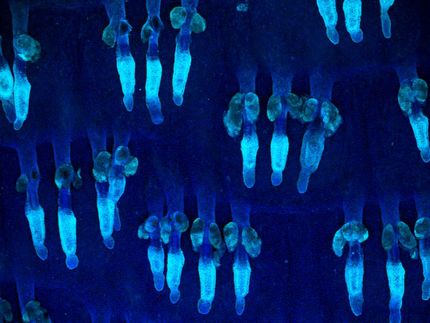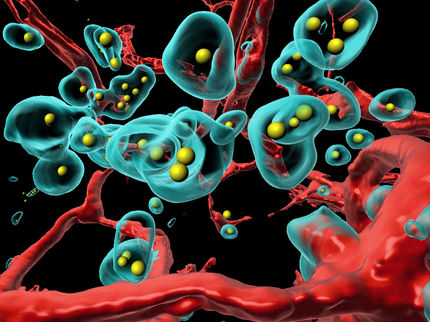Dendrimer technology gets a grip on cell proteins, could improve cancer treatment
Advertisement
Purdue researchers have devised a way to capture the finer details of complex cell processes by using tiny synthetic particles known as dendrimers, a technology that could lead to more targeted treatment for cancer.
A precise understanding of how cells engulf small particles, a process known as endocytosis, could help researchers improve drug delivery and reveal the mechanisms of viruses. But the particles "eaten" by cells and the proteins that control cell entry pathways are too little for conventional technologies to detect.
W. Andy Tao, professor of biochemistry, and his collaborators developed a method that sends dendrimers into cells to track, capture and isolate the proteins that regulate the cell internalization process, identifying 809 proteins involved in cell entry pathways.
The technology, known as Tracing Internalization and TrAfficking of Nanomaterials or TITAN, "helps us understand how cells internalize extracellular particles and how they move these particles around," Tao said. "This is all useful, valuable information for the future as we try to disrupt those processes to keep harmful things like viruses out or work with the processes to deliver a helpful drug."
Dendrimers are symmetrically branched nanoparticles, similar in size to naturally occurring proteins. Meaning "tree-like" molecule, a dendrimer's small size and structure make it an ideal courier for transporting a variety of molecules via its many branches into a cell. One of the most valuable roles of dendrimers is targeted drug delivery for diseases such as cancer. Dendrimers can selectively deliver medicine to cancer cells unlike chemotherapy, which destroys healthy and cancerous cells alike.
Tao and the team chemically modified the dendrimers before sending them into cells with a fluorescent tag that would make the dendrimers easier to spot as they traveled within the cell; a photoreactive crosslinker that would enable dendrimers to attach to proteins under UV radiation; and a "handle" with which researchers could fish out the dendrimers from the rest of the cellular material.
When the researchers irradiated the cells, the dendrimers inside grabbed all proteins in their surroundings, providing a real-time, freeze-frame shot of which proteins regulate endocytosis. The team irradiated the cells at three different time intervals - 30 minutes, an hour and two hours.
"We saw different molecules at each time point that told us where the dendrimer was and by which mechanisms it was delivered into the cell," Tao said. "Say you drove to Wal-Mart, but instead of telling me which roads you traveled, you took photos of buildings and landmarks at different time points along the way. Those images will tell me which roads you took. This is the same method."
The researchers used mass spectrometry to isolate and identify hundreds of proteins involved in endocytosis, confirming mechanisms that many biologists had hypothesized previously.
Knowing which proteins guide endocytosis and at which stages could help researchers refine the delivery of nanomedicine and possibly make it more mobile in cells, Tao said.
"We can extract a lot of crucial information from TITAN," he said. "This is a platform technology that opens a new way to study many small-scale biological processes in the cell."
Some of TITAN's potential applications include determining how viruses enter and travel inside cells, revealing how cancer cells communicate with one another and helping track where nanoparticles end up inside the cell, a feature that is relatively unknown.
"A lot of nanotechnology is being developed, but we really have no idea what safety or toxicity issues might be involved," Tao said. "Understanding where these nanoparticles go in the cell and if they degrade over time is important. TITAN can track how nanoparticles move in the cell and whether they end up in the nucleus - which could be a problem - or in the cell's 'garbage disposal.'"





























































